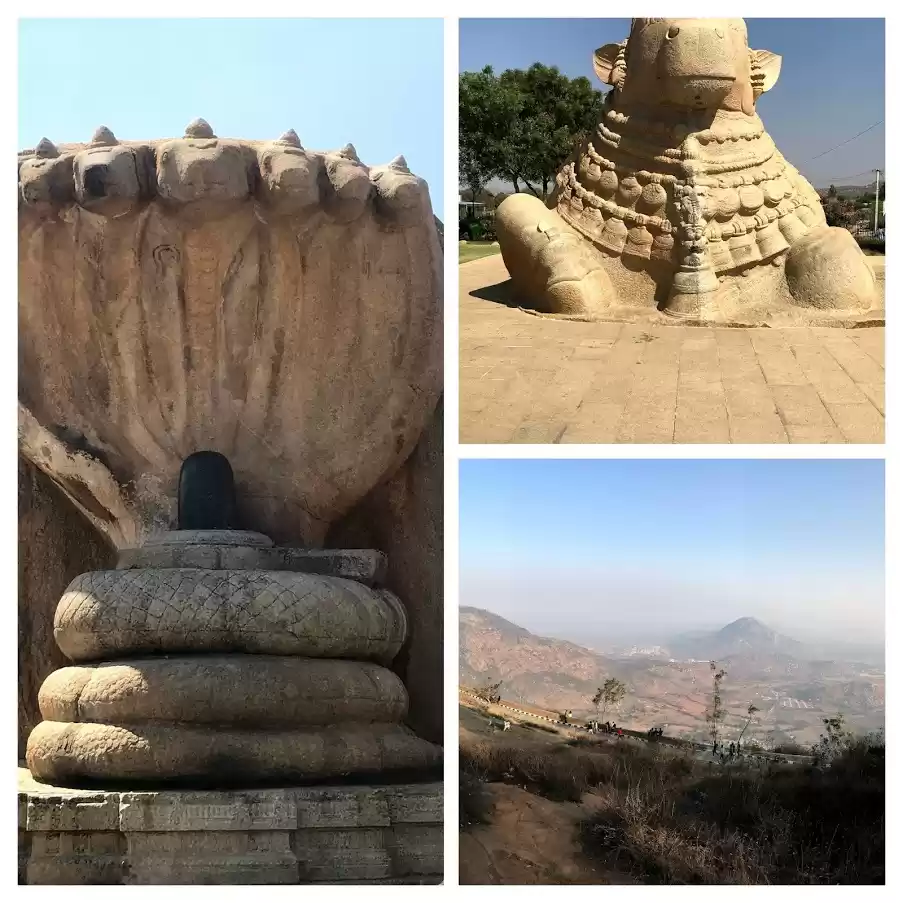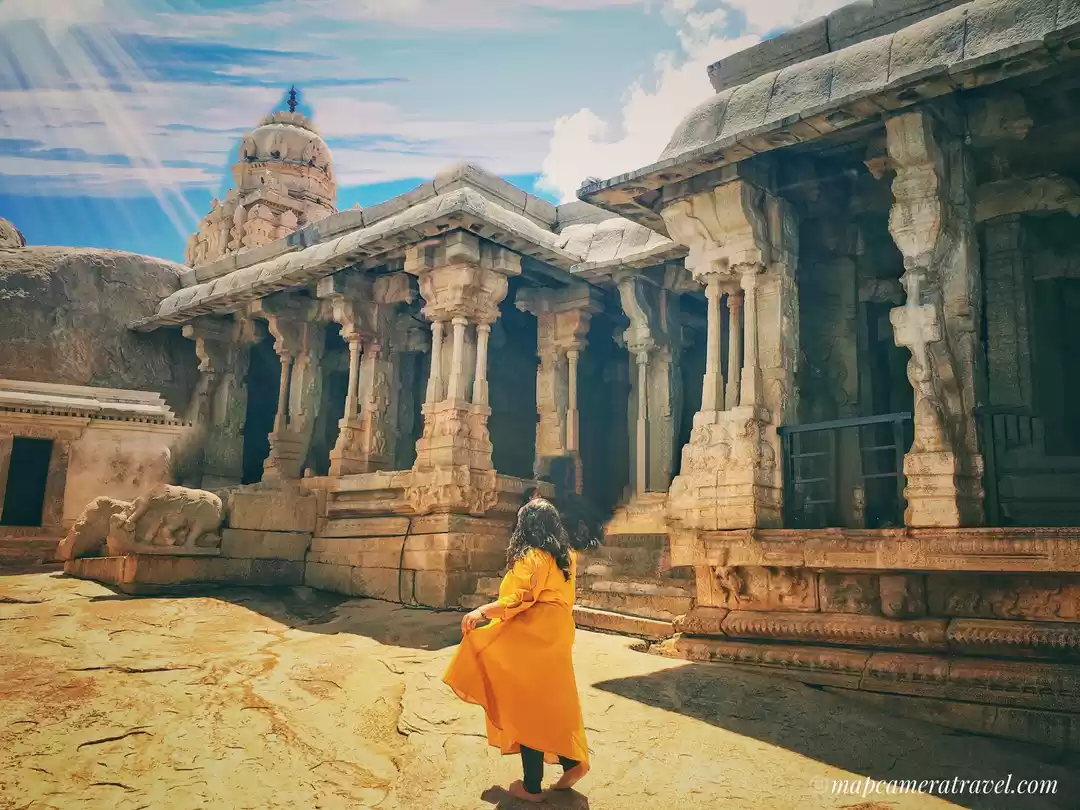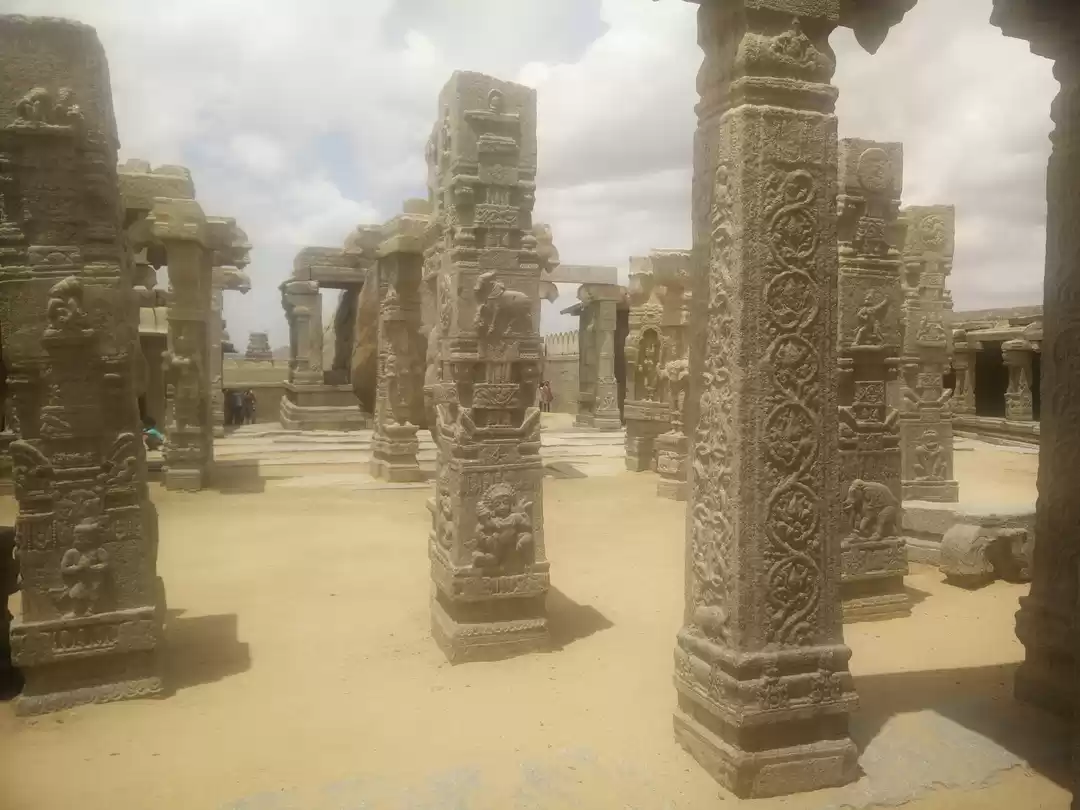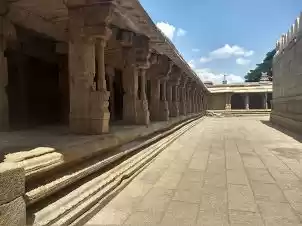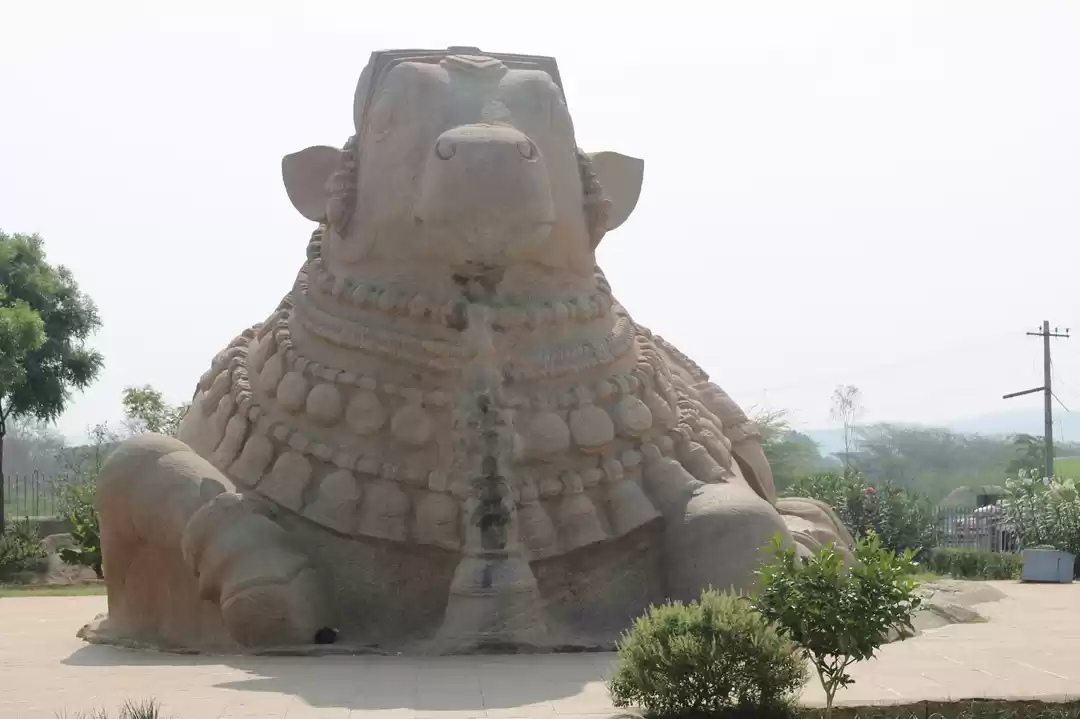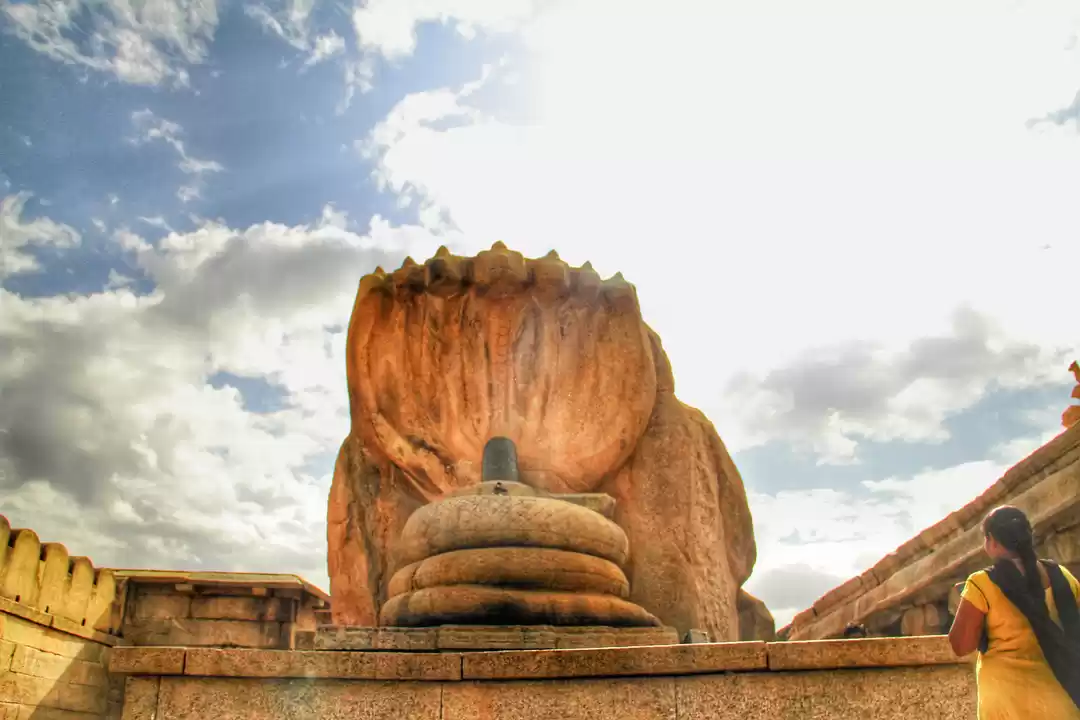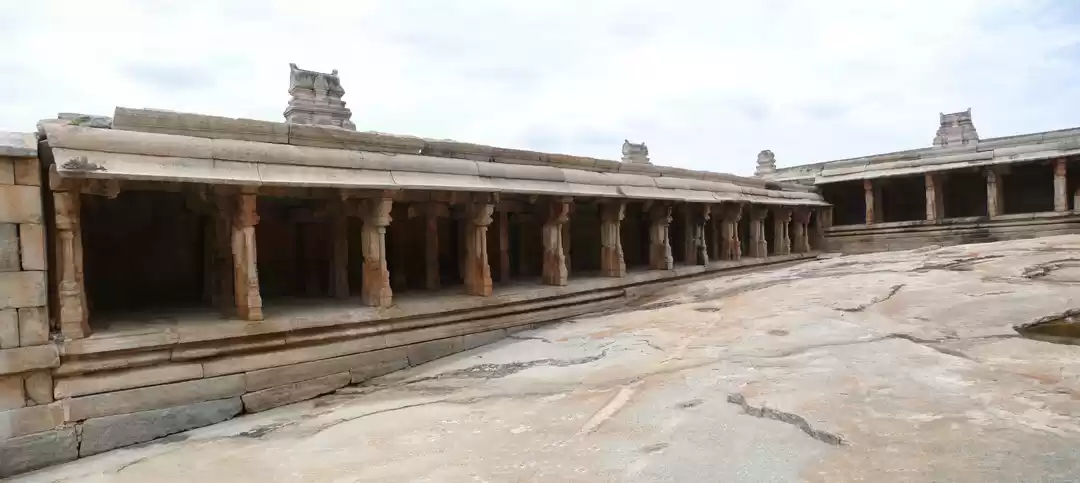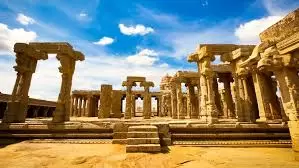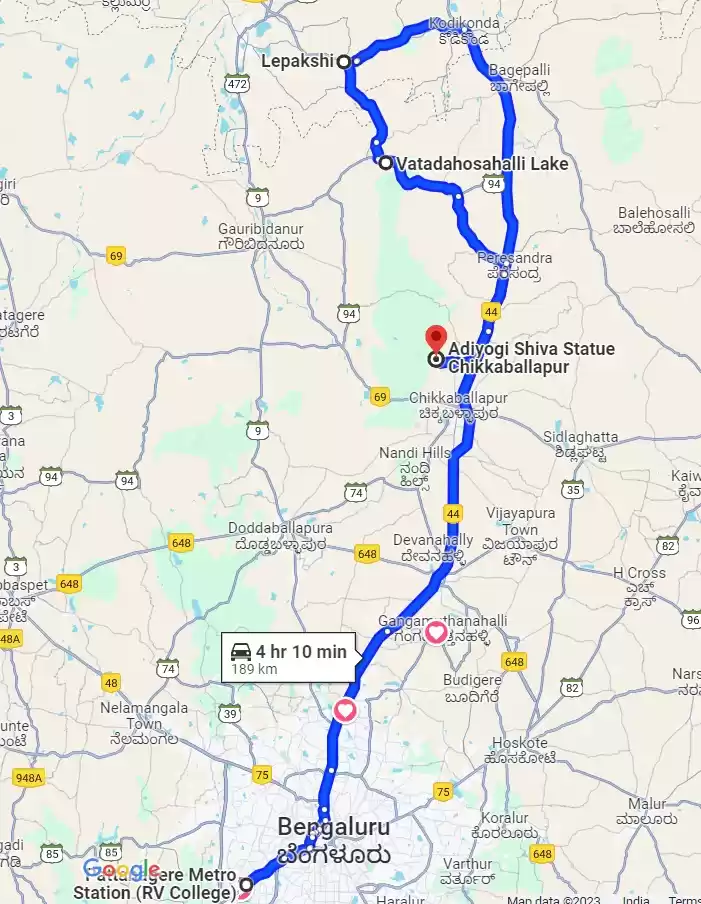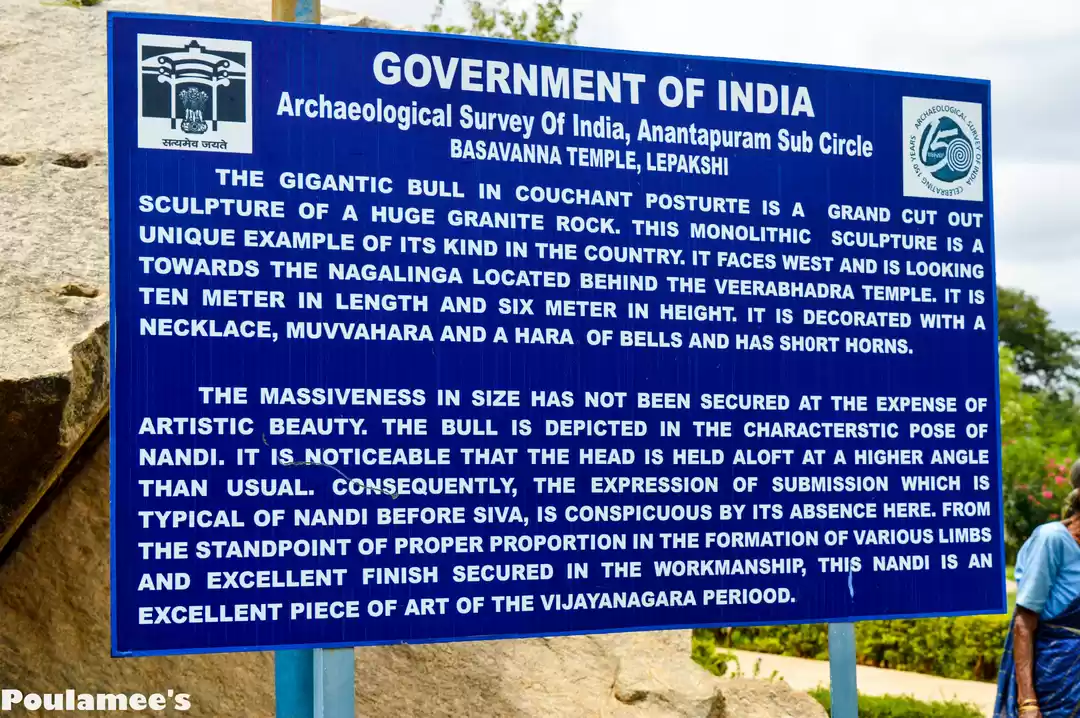Lepakshi
Lepakshi 16-04-2017
Started from K R Puram, Bangalore at 07.00 am, driving through the outer ring road reached Hebbal and hit NH44 on a bright Sunday morning. A stopover for sumptuous parathas with yummy thick curd and a nice masala teabreakfast at the Indian Paratha Company on the Bangalore – Hyderabad highway refreshed us for the remaining leg of the trip.


The GPS indicated a distance of about 80 kms to our destination as we started after this break. The drive on the highway is for around 65 kms, then a left turn at Kodikonda excise checkpost for another 15 kms. This checkpost with the trucks lined up to your left could serve as a landmark too. Well laid roads made the drive smooth and we reached “Lepakshi” around 09.30 am.


Lepakshi is a small village in Anantapur district, Andhra Pradesh, located at a distance of 120 kms from Bangalore. A heritage site being preserved and maintained by the Archaeological Survey of India Lepakshi has a temple dedicated to Lord Shiva, Lord Vishnu and Lord Veerabhadraswamy. The temple was built on “Kurma Shaila” meaning tortoise shaped hillock during the Vijayanagara dynasty. The temple’s intricate architecture and sculpture is typical of the Vijayanagara style


“Lepakshi” as intriguing is the name so are the stories behind it. The first one being Lepakshi derived this name from an incident in the Ramayana – Jatayu in an attempt to save Sita from the evil clutches of King Ravana got injured badly. Lord Rama found him in this condition and addressed him as “Le Pakshi” meaning “rise bird” in Telugu. The second theory is more tragic – Minister Viruppana in the absence of the King Achyuta Raya had used funds from the Kingdom’s treasury to build this temple. This made the king very furious and ordered his guards to gorge out the minister’s eyes. But then Virupanna plucked out his eyes on his own and threw it at the temple walls. Hence the name “Lepa Akshi” – village of the blinded eye.
Closely associated to Lord Shiva, the Lingam, Damru, Nandi the bull and the Trishula have been inscribed on the gold plated base of the Dhwaja Sthambha at the entrance of the main shrine.


Apart from the main deities the main temple also has statues of Ganesha, Parvathy, Durga Devi, Navagrahas and three more siva lingas. You will be amazed by the intriguing pieces of sculpture on the pillars and beautiful paintings on the ceiling of this temple. These paintings depict popular stories of Lord Krishna and Rama from the Ramayana, Mahabharata and the Puranas. The carved stone pillars display various deities, animals, musicians, dancers etc.


A piece of paper passing through the base of the hanging pillar defies the law of science. Incidentally this pillar is known to be the main pillar supporting the remaining 79 pillars of this brilliant piece of architecture. An inquisitive British architect did try to move this pillar, but all other pillars displaced themselves. Fearing a structural collapse, the pillar was left on its own.

As you step out of the main premises, you can see a huge Nagalingam – A seven headed serpent protecting the granite lingam below, another piece of amazing architecture which is said to be carved out of one single stone, while the sculptors waited for their mother to prepare lunch. Apart from the main lingam, there are smaller sculptures of lingams with a scorpion, a man and an elephant too carved in the same rock. There’s no way you would miss the big Ganesha and the vahana mooshika just next to this lingam. Next an unfinished kalyana mandapam considered to be the wedding place of Lord Shiva and Parvathi welcomes you. The sculptures on these pillars are carvings of the Gods present during the wedding.








Around 200 metres from the shrine is a huge monolithic Nandi, one of the largest sculptures in the country. This Nandi was built in a way that it could see the Nagalingam, but the present day urbanization has disconnected it from the main temple. Opposite the Nandi, among huge boulders and rocks stands a structure which could have been a watch tower during the Vijaynagar empire.


Charming Lepakshi withstanding the ravages of times has stood as witness to the glorious past of Vijayanagara Empire.
















